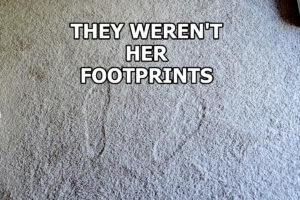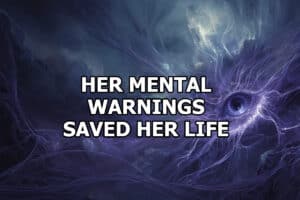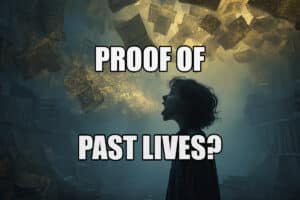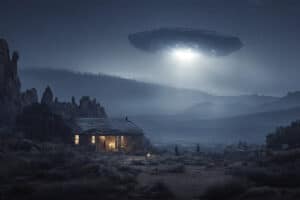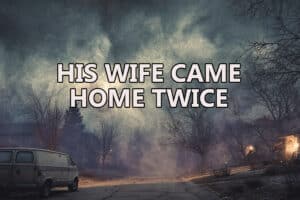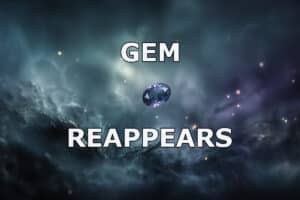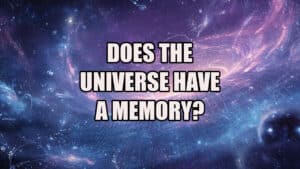
Picture a starlit night, the cosmos stretching endlessly above. For millennia, mystics have whispered of the Akashic Records—a metaphysical library holding every thought, event, and soul’s journey. Now, physicists propose a startling parallel: the Quantum Memory Matrix (QMM), where space-time itself might store the universe’s history.
Per Popular Mechanics, this theory suggests quantum “memory cells” encode cosmic data, potentially solving mysteries like the Black Hole Information Paradox. Could science be echoing ancient spiritual wisdom? This post explores how QMM and the Akashic Records converge, blending verified science with metaphysical curiosity.
Key Takeaways
The Quantum Memory Matrix (QMM) posits space-time stores quantum information, resembling the metaphysical Akashic Records’ cosmic archive.
Mystics describe accessing the Akashic Records via intuition, while QMM requires quantum computers, highlighting a science-spirit crossover.
Skeptics question both concepts’ testability, yet cultural parallels suggest a shared human quest to understand the universe’s memory.
The interplay of QMM and Akashic Records sparks debate on whether science is rediscovering mystical truths.
Never Miss A Paranormal Story!
Newsletter subscribers get insider access to the latest paranormal posts!
Your email is safe with us and you can unsubscribe at any time!
The Quantum Memory Matrix: A Scientific Cosmic Archive
In 2023, physicist Florian Neukart of Leiden University introduced the QMM, a theory suggesting space-time isn’t just a stage for cosmic events but a recorder. “Space-time is imprinted with a memory of what happened,” Neukart told New Scientist. These “memory cells” are quantum states storing data from gravity, electromagnetism, and nuclear forces. This could resolve the Black Hole Information Paradox, where Stephen Hawking argued black holes destroy information via Hawking radiation, defying quantum field theory’s rule that information is preserved. QMM proposes that evaporating black holes leave their data in space-time’s memory.
The theory also hints at explaining dark matter. Neukart suggests the cumulative weight of stored quantum information might account for dark matter’s elusive mass, which comprises most of the universe’s matter yet barely interacts with light. Testing QMM is a challenge—quantum computers may eventually extract this data—but the idea has ignited scientific debate. On X, @newscientist posted, “Could this explain dark matter and more?” reflecting public intrigue.
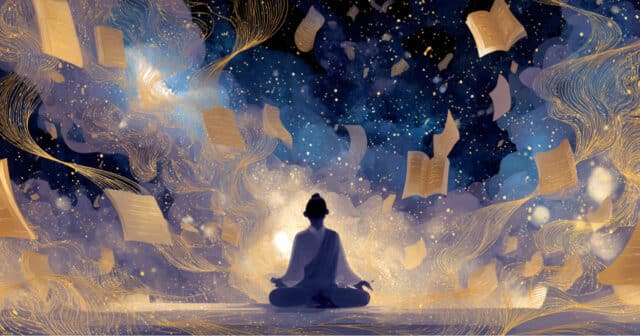
The Akashic Records: A Mystical Parallel
The Akashic Records, rooted in ancient Hindu and Theosophical traditions, are described as an etheric “Book of Life” containing every event, thought, and emotion across time. Mystic Edgar Cayce, dubbed the “Sleeping Prophet,” claimed to access these records in trance states during the early 20th century. “The Akashic Records are the collective consciousness of all souls,” Cayce wrote, per the Edgar Cayce Foundation. Practitioners like Linda Howe, quoted in Gaia, describe accessing them via meditation, seeing visions of past lives or cosmic truths.
Unlike QMM’s reliance on quantum mechanics, the Akashic Records are accessed through intuition or spiritual practice. Yet, the parallels are striking: both envision a universal repository of information, eternal and all-encompassing. On X, @MysticPath22 shared, “The Akashic Records hold the universe’s story—science is just catching up,” echoing a growing sentiment among spiritual communities.
The idea that the universe may have memory has sparked debate. Some physicists argue QMM is a rehash of quantum gravity theories, adding little new. Yet, Neukart insists it’s a bold step forward, with potential to reshape cosmology. Posts on X reflect public fascination, with @newscientist noting, “It could explain the nature of dark matter and much more.”
Witness Accounts: Voices from the Metaphysical
Those claiming to access the Akashic Records offer vivid accounts. Lisa Barnett, an Akashic Records teacher, told MindBodyGreen, “I saw a golden library in meditation, with scrolls of light revealing my soul’s purpose.” Such experiences are common among practitioners, who describe the Records as a vibrational field, not a physical place. Another reader, @SoulSeer7 on X, posted, “In a guided meditation, I felt the Records as a warm, infinite light showing me past lives—unverified but profound.”
These accounts lack empirical backing but resonate with QMM’s idea of information stored beyond physical matter. While Neukart’s “memory cells” are quantum states, mystics’ “scrolls of light” suggest a shared archetype: a cosmos that remembers. The lack of verifiable evidence keeps these claims in the metaphysical realm, yet their emotional weight fuels curiosity.
Expert Perspective: Bridging Science and Spirit
Some scientists see value in exploring metaphysical parallels. Physicist Ervin Laszlo, author of Science and the Akashic Field, argues the Records align with quantum field theory. “The universe’s information field could be what mystics call the Akashic Records,” Laszlo told the Shift Network. He points to quantum entanglement—where particles share information instantly across distances—as evidence of a non-local information field, akin to QMM’s space-time memory.
Neukart, however, remains focused on testable science. Per Anomalien.com, he emphasizes QMM’s reliance on quantum computers to decode space-time data, distancing it from mystical claims. Still, the crossover intrigues interdisciplinary thinkers. On X, @QuantumMystic noted, “QMM and Akashic Records both suggest the universe is a giant hard drive—different languages, same idea.”
Skeptical View: A Leap Too Far?
Skeptics question both QMM and the Akashic Records. Physicist Sabine Hossenfelder, in a YouTube critique of quantum theories, said, “Speculative ideas like QMM need rigorous testing, not hype.” She argues the theory’s dark matter claims are premature without empirical data. For the Akashic Records, skepticism is sharper. Neuroscientist Sam Harris, per his podcast Waking Up, dismisses such concepts as “unfalsifiable, lacking evidence beyond subjective experience.”
The crossover faces scrutiny, too. “Comparing QMM to mysticism risks diluting science,” one physicist told New Scientist, requesting anonymity. Yet, both sides agree the human drive to understand cosmic memory—whether through equations or meditation—reveals a universal curiosity.
You Might Also Like:
Cultural and Historical Context
The idea of a cosmic memory spans cultures. Ancient Egyptians believed the god Thoth recorded all deeds in a divine ledger. In Buddhism, the concept of karma implies a universe that “remembers” actions. The Akashic Records, popularized by Theosophy in the 19th century, blend these traditions with modern spirituality. Today, QMM’s emergence reflects a scientific parallel, as humanity grapples with information’s role in the cosmos.
This crossover impacts culture. Books like Laszlo’s sell widely, and X posts like @CosmicTruth’s—“Is QMM science’s Akashic Records?”—show public fascination. The debate boosts interest in quantum physics and spirituality, with retreats and podcasts blending both. Per Gaia, this fusion drives tourism to spiritual sites like Sedona, where Akashic Records workshops thrive.
Conclusion
Does the universe remember everything, as QMM and the Akashic Records suggest? Science and metaphysics converge on this question, each offering a lens—quantum mechanics or spiritual intuition—to explore it. While skeptics demand evidence, the parallels ignite wonder. Could space-time’s memory cells be the Akashic Records’ scrolls of light? The answer remains unproven, but the quest unites us.
Have you seen something unexplained or had an experience that makes no sense? Email Reports@ParaRational.com.



